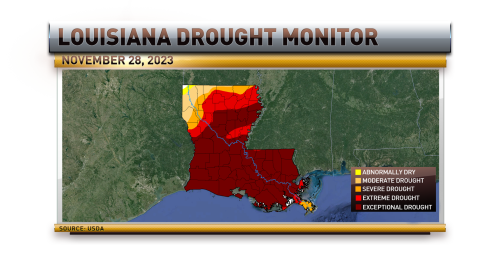The agriculture sector in Louisiana has been facing months of extreme temperatures as well as the worst drought conditions possible — and now, we know the cost of the drought damage to the state’s agricultural industries.
According to a recent study from the Louisiana State University Ag Center, the state’s agricultural and forestry sectors experienced approximately $1.69 billion in damages stemming from excessive heat and drought.
Plant enterprises suffered losses of $836 million, including the state’s major row crop commodities. That number accounts for failed acres, reductions, losses, as well as prevented-planted acres. Livestock and hay operations dealt with $389 million in losses. The forestry sector lost $325 million in revenue.
The graphic above provides a look at the state based on the current U.S. Drought Monitor. As you can see, Louisiana is almost completely covered in “Exceptional Drought,” with some producers in the northeastern regions seeing only moderate to severe levels. Writers of the Monitor say more than four million people are impacted by the drought conditions.










